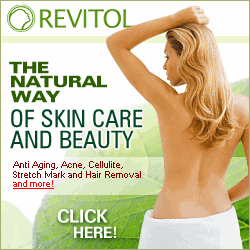Skin Care
Skin Types
Dry
Oily
Combination
Sensitive
Conditions
Eczema
Part I
Eczema
Part II
Psoriasis
Rosacea
Cellulite
Aging and Wrinkles
Sun Protection
Introduction
Factor
Tanning and Burning
Other
Babies
Women
Men
Winter and Summer
Natural Ingredients
|
Tips for Providing Maximum Sun Protection
  When applied according to the product's instructions, sun screens provide maximum protection from the sun's damaging ultraviolet rays. Always be sure to choose a SPF (sun protection factor) that offers the maximum protection for your skin type. But remember that no product will work if you fail to apply it every time you go outside. When applied according to the product's instructions, sun screens provide maximum protection from the sun's damaging ultraviolet rays. Always be sure to choose a SPF (sun protection factor) that offers the maximum protection for your skin type. But remember that no product will work if you fail to apply it every time you go outside.
The sun can reflect off many different surfaces including snow and cement and UV rays are present even on cloudy days. With these facts in mind, the best way to provide maximum sun protection is to develop a habit of applying your sun protection products whenever you go outside, reapplying them as often as necessary.
Sun Protection – More Than Skin Deep
One thing you'll realize about most sun protection products is that they're not always designed for all body parts. They're great at protecting the skin, but what about the eyes, lips and hair? The sun can cause serious damage to the eyes and has been associated with the development of cataracts.
The lips too are extremely delicate and they'll easily burn if not protected from the sun. Lips that are dry and chapped neither look good nor feel good. Applying a product containing zinc offers maximum sun protection. Lip balms, conditioners and lipsticks that have a SPF of at least 15 are also good choices.
The sun can damage hair, too.
We sometimes don't realize this because we don't actually feel the effects...but, we can see them.
Dry, dull, frizzy hair doesn't only result from excess chemical processing. Sun damages hair and harsh pool chemicals and salt only worsen the problem.
Other Types of Sun Protection
Sun protection doesn't always come in a bottle. Protective clothing, hats and sunglasses are all just as important in blocking the sun's damaging ultraviolet rays. So is seeking shade whenever possible. Here's a rundown on other types of sun protection.
Many clothing manufacturers now produce a protective clothing line with a UPF or ultraviolet protection factor. Designed for those who spend a lot of time outdoors such as golfers, hikers, fishers, kayakers and others, these clothes are stylish and functional. You'll find protective clothing for all members of the family, including infants. Even if you can't find or afford clothing with UPF, tightly woven fabrics and dark colors are effective at blocking out the sun's harmful rays. And dry clothing blocks out more UV rays than do wet. Of course, long sleeves and pants offer maximum sun protection, but who wants to wear that much clothing when out in the sun?
Hats protect hair, eyes, face and the tips of ears. Wide brims offer the most protection and will actually help cool you off. Sunglasses are an absolute must when outdoors. When selecting a pair, make sure the label specifically states that the lenses offer UV protection otherwise they'll be useless. As a general rule, the bigger the lens, the more sun protection. Wrap-around styles offer the most protection because they block sun that can hit the eyes from the sides. And they're trendy too!
|

